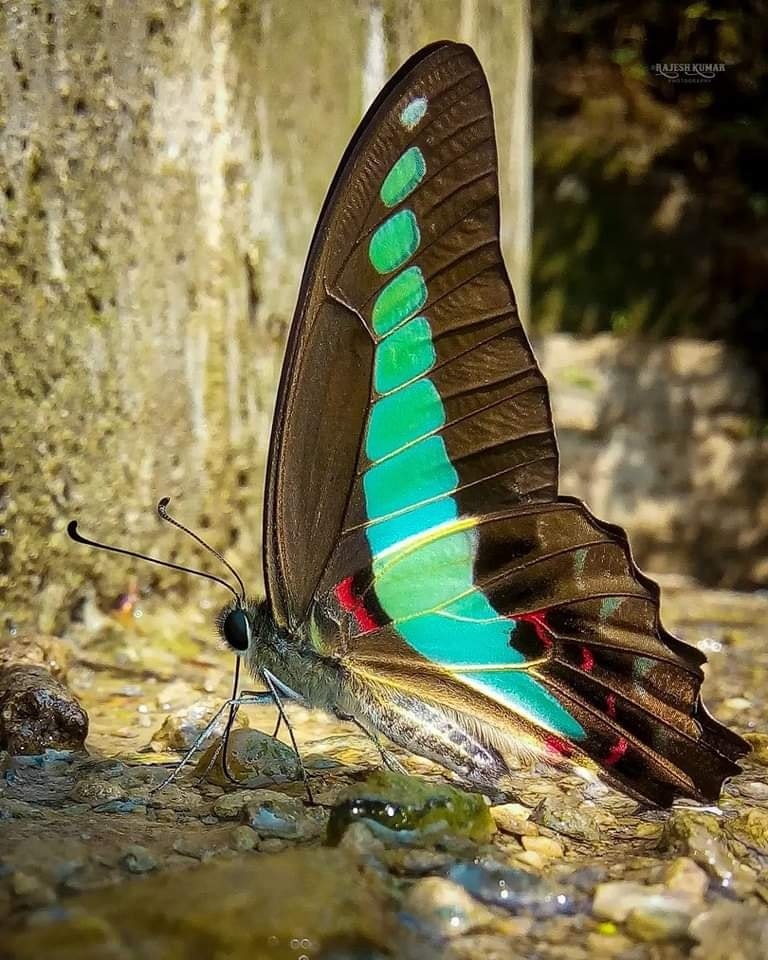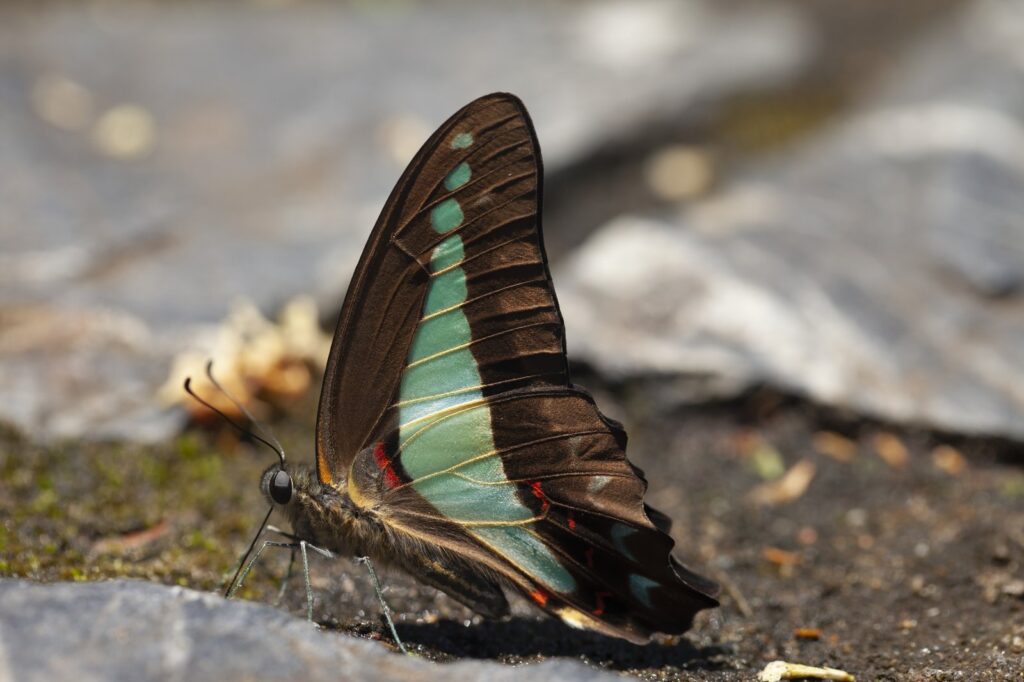
The common bluebottle, Graphium sarpedon, is a large and striking swallowtail butterfly found in Southeast Asia, India, Sri Lanka, and eastern Australia. It is known for its distinctive black and white markings, which make it one of the most easily recognizable butterflies in its range.

Appearance
The common bluebottle has a wingspan of 55 to 75 mm (2.2 to 3.0 in). The upperside of the wings is black with a broad white band across the forewings and a narrower white band across the hindwings. The underside of the wings is similar, but with additional white markings.
Habitat and Distribution

The common bluebottle is found in a variety of habitats, including tropical rainforests, mangroves, and suburban gardens. It is most common in lowlands, but can also be found in montane forests up to 1,600 meters (5,200 ft) in elevation.
Life Cycle
The common bluebottle lays its eggs singly on the leaves of its host plants, which are members of the laurel family (Lauraceae). The larvae are black or green with numerous spines. They feed on the leaves of the host plant until they are ready to pupate. The pupae are brown or green and are usually found attached to the underside of leaves.
Behavior

The common bluebottle is a strong flier and can often be seen soaring above the treetops. It is also known for its habit of mud-puddling, which is the behavior of gathering at mud puddles to extract salts and minerals.
Conservation Status
The common bluebottle is not considered to be threatened. However, it is important to protect its habitat in order to ensure its survival.
Additional Information

The common bluebottle is a popular butterfly among collectors. It is also a valuable pollinator of many plants.

Leave a Reply